If you’re like us, you might sometimes have a problem with complex tasks, like trying to drive an ambulance and send a text message at the same time. But hey, at least most of us have figured out the simplest things that get us through the day, right?
Except, you know, some of the simple things we’ve done every day of our lives, like …

What could be simpler than taking a good crap? Even babies are good at it. You might be surprised, then, to find out that even those of us who can burp without throwing up get this wrong every single day.
 The one who just threw up on the other one’s shoulder is better at pooping.
The one who just threw up on the other one’s shoulder is better at pooping.
Chances are the pooping facility nearest you is a sitting toilet, a relatively recent invention that flushed its way into mankind’s heart with the advent of indoor plumbing in the 19th century. Indoor plumbing has turned out pretty well for the most part, but the pooping style that came with it definitely has not. Pooping on a modern sitting toilet is a big part of where hemorrhoids come from, and it can also cause diverticular disease, an age-related condition that pretty much only occurs in parts of the world where sitting toilets are used, and which can lead to a range of pleasantries up to and including colonic obstruction. And things aren’t getting better: The last few decades have seen a rise in popularity of “comfort height” toilets that sit two to four inches higher off the ground than older models and that make our pooping predicament even worse.
 GettyFuture toilets will exist just to kill us.
GettyFuture toilets will exist just to kill us.
So how the hell are we meant to do it?
Luckily, there’s a relatively simple way to end this poop dilemma. A 2003 study observed 28 people pooping in three positions: sitting on a high toilet, sitting on a lower one and squatting like they were catchers at a baseball game (catcher’s mitt optional, but encouraged). After initially being mistaken for a German porn company, the researchers found that pooping took about a minute less when done squatting and that participants rated the experience as “easier” (God, we hope they were getting paid).
In fact, toilets that require you to squat that way have been the standard for most of human history and are still widely used in the non-Western world.
 GettyAnd urban centers of the Western world.
GettyAnd urban centers of the Western world.
According to proctologists, “We were not meant to sit on toilets, we were meant to squat in the field.” When you’re in a sitting or standing position, you’re forming an angle between the where the poop is and where the poop’s gotta come out. There’s even a muscle that’s purpose is to tighten things up when we’re sitting or standing to prevent accidents. Squatting straightens out this angle and removes the chokehold.
 GettyFor no reason, here’s an icing pipe.
GettyFor no reason, here’s an icing pipe.
If the thought of squatting awkwardly on top of your toilet seat isn’t for you, you can produce a similar poop-enhancing angle by resting your feet on a footstool (or anything handy) and leaning the top half of your body forward.
 GettyDemonstrated here.
GettyDemonstrated here.

From a young age, we’re taught that the daily use of a hot shower, copious amounts of soap and a scratchy washcloth are necessary to rid ourselves of dangerous microorganisms and the putrid smell of human skin. And if you aren’t squeaky-clean, you can forget about dating, career advancement and the promise of a future that doesn’t involve dying alone in a den of your own filth.
 GettyThat’s what college is for.
GettyThat’s what college is for.
As it turns out, showering or bathing daily, while it may make us more socially acceptable, wreaks havoc on something hilariously called the horny layer. Hot water, soap and abrasive surfaces strip off the horny layer, exposing living cells to the elements. And although we’ve just used the words “strip,” “exposing” and “horny” in the same sentence, we assure you that this is not the making of a sexy situation. On the contrary, damaging this protective layer of skin makes us more susceptible to disease.
 Via Wikimedia CommonsSexy disease.
Via Wikimedia CommonsSexy disease.
Before recent modern conveniences, people bathed less often, and frequently in the same water. Even nowadays, showering doesn’t kill bacteria or other microorganisms, though it does move them around. A colony of bacteria living on your shower wall might move to your leg; a colony from your leg might move to your head; a colony from your groin might even take up residence on your hands. For this reason, surgeons in many hospitals are not allowed to shower right before operating.
 GettyNot even you, Doctor McPenishands!
GettyNot even you, Doctor McPenishands!
Studies have shown that there are no measurable differences in the number of microorganism colonies a person is host to regardless of how frequently that person showers. Of course, using antibacterial soaps can kill microorganisms, though in an effort not to create too many super bacteria, medical experts generally recommend not using these soaps daily.
 Getty“Say what you like, but you have to admit my bones are super shiny!”
Getty“Say what you like, but you have to admit my bones are super shiny!”
So how the hell are we meant to do it?
The most important thing to do to keep the skin healthy is to preserve the horny layer. There’s no magic number of showers each week, though it’s generally agreed that the number would fall somewhat shy of seven. Skipping showers, or, if you’d like a fancy French term, celebrating sans douche days, gives your skin time to repair some of the damage that the last shower caused.
 GettyAny more than a day and there’s no amount of French that’ll get rid of Eau de Sewer.
GettyAny more than a day and there’s no amount of French that’ll get rid of Eau de Sewer.
When you shower, use warm or cool water and a mild soap (if at all), and rehydrate the horny layer by rubbing on some moisturizer afterward. Better yet, convince an attractive friend to help with this. Once you’ve cleaned up, you’ll want to make sure you air dry. Ignore protesting roommates or family members and remind them, as you’re drip-drying at the breakfast table, that they should be grateful you’re showering only a couple of times a week.
 Getty“Kids, ignore your father while I try to remember why I married him.”
Getty“Kids, ignore your father while I try to remember why I married him.”
Breathing

Congratulations: Chances are that if you’re reading this, and you’re not a ghost, you’ve managed to figure out breathing. On the other hand, chances are you’re also doing it wrong.
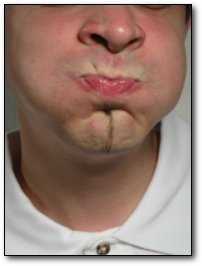 iStockphotoYou’re also suddenly aware that you’re breathing now.
iStockphotoYou’re also suddenly aware that you’re breathing now.
Take a deep breath right now. We’ll wait. If you’re anything like most people, you raised your shoulders a little and puffed out your chest like a pigeon in heat. You probably don’t see anything wrong with using your chest to breathe, since after all, that’s where your lungs are. What the hell else are you going to use? Your thighs? Well, smartass, it turns out that the muscle you’re supposed to use to breathe, your diaphragm, is under your lungs and closer to your belly.
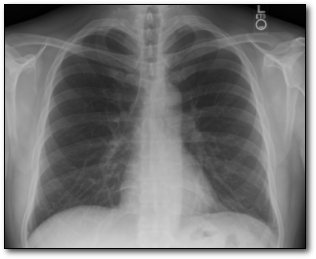 Via Wikimedia CommonsShown here as the white mass on the bottom of this X-ray of Tom Cruise (may not actually be Tom Cruise).
Via Wikimedia CommonsShown here as the white mass on the bottom of this X-ray of Tom Cruise (may not actually be Tom Cruise).
When upright, most people are habitual chest breathers: We use a shallow form of respiration that makes use of only the top part of the lungs. In reality, most of the blood vessels that take up oxygen are in the bottom, neglected half. Since so much lung power is going to waste, we get less oxygen, and as a result, we’re all breathing more rapidly than nature intended us to.
Chest breathing also tends to upset the blood’s oxygen/carbon dioxide balance and can lead to headaches, fatigue, anxiety and even panic attacks. According to one expert, you’re also potentially suffering from sweaty palms, difficulty relaxing, heightened pain perception and general fatigue.
 Photos.comOr as most people call it — a “first date.”
Photos.comOr as most people call it — a “first date.”
So how the hell are we meant to do it?
It turns out that breathing is one area in which babies are much smarter than you. Babies use a deeper type of respiration called abdominal breathing, which strengthens and makes full use of their diaphragms. It’s only as we grow older that we revert to the more inefficient style. Luckily, you can train your body to go back to breathing properly, and over time, you can even breathe abdominally in your sleep.
 Photos.comNot to be confused with snoring, which is just breathing abominably.
Photos.comNot to be confused with snoring, which is just breathing abominably.
To practice it, try to “inflate” your stomach as you breathe in, while keeping your chest relatively still. Then contract your abdominal muscles on the exhale. Not only will this give you more oxygen per breath, it will eventually strengthen the diaphragm. A stronger diaphragm means you get more oxygen with each breath, so your brain won’t need to divert any away from your muscles, meaning that you get tired less easily.
 Photos.comTry this now at work, and observe as people kindly give you more breathing space!
Photos.comTry this now at work, and observe as people kindly give you more breathing space!
A study on cardiac patients showed that this type of breathing leads to improved exercise performance and decreased shortness of breath, and it’s also been linked to lower blood pressure. This is the reason that so many coaches recommend breathing practice as a shortcut to sports-based superpowers.
 Getty“I’ll have you know this exercise is recommended by my doctor.”
Getty“I’ll have you know this exercise is recommended by my doctor.”

OK, so maybe you can’t handle pooping, breathing or much else that you’d think would come naturally. But surely just lying in bed every night is OK, right? So why the hell do you keep waking up at 3 a.m.? You lie there, wondering what the hell is wrong with you. Will I oversleep? you wonder. How will I find the time to sit down and poop in the morning?
 Getty“I have to remember to breathe, too. I can’t deal with all this.“
Getty“I have to remember to breathe, too. I can’t deal with all this.“
If this happens to you often, you’re not alone. Chances are, if you mention waking up like this to your doctor, it’ll be diagnosed as a “sleep disorder,” and you’ll be given one of the tens of millions of prescriptions for sleeping pills handed out to Americans each year. You’ll pop some Ambien, only to awaken a few hours later beating up a police officer. What on earth went wrong?
 GettyTo be fair, you couldn’t have known that wasn’t a real truncheon.
GettyTo be fair, you couldn’t have known that wasn’t a real truncheon.
So how the hell are we meant to do it?
In this case, you’re already doing it right. It’s your reaction that’s wrong.
The idea that an uninterrupted eight hours is the only sleep pattern natural to mankind is surprisingly recent. Before someone who wasn’t Thomas Edison invented the light bulb, people in areas with more than eight hours of darkness usually slept in segments: three to five hours of sleep, an hour of wakefulness and then another three to five hour nap. The hour or so of awake time was used for quiet reflection, sex, smoking and pretty much everything except staring at the wall terrified of insomnia. In fact, this small window of consciousness was renowned as the best time for boning, as the tranquility between the first and second sleep was known as being uniquely suited to getting up to mischief with the person lying bored beside you.
 GettyThis isn’t compulsory.
GettyThis isn’t compulsory.
In recent times, artificial light has pushed our normal bedtime back later and later, and this segmented sleep has been compressed into a single eight hours. Still, our brains are naturally wired for pre-light-bulb days. In a monthlong experiment, healthy subjects were given a long artificial “night” lasting 14 hours. They quickly reverted to the segmented pattern, waking up for an hour or two of “peaceful wakefulness” between two three to five hour stretches.
 GettyBy the end of the experiment, all the women were pregnant.
GettyBy the end of the experiment, all the women were pregnant.
So why do we still wake up even when we’ve been up until midnight watching Deadliest Warrior marathons? Well, some people tend to revert to this natural sleep cycle despite all the artificial light, especially during dark winter months. Fortunately, having this sort of technology-resistant superbrain doesn’t necessarily spell disaster. According to experts, if you stay calm and allow yourself to fall back to sleep naturally rather than lying there wondering why you’re awake, you usually won’t see any negative effects the next day.
 GettyUnless you leave the TV on while you sleep.
GettyUnless you leave the TV on while you sleep.

Obviously, giving birth to a smaller human might take a lot more effort than breathing. But when you realize that even the idiot deer that tried to jump in front of your car last month has probably managed to produce young, you would hope that we smart modern humans are getting it really right. Not so. Today, the majority of women in America are still directed to give birth in the “lithotomy” position, an odd pose that consists of lying flat on your back with your feet and legs raised, sometimes in stirrups.
 GettyStirrups? This woman has clearly just given birth to this horse.
GettyStirrups? This woman has clearly just given birth to this horse.
In fact, short of actually duct-taping your legs together, this is pretty much the worst position imaginable to give birth in. And that’s not the opinion of a bunch of hippies who think that childbirth should involve dolphins and mood lighting: The World Health Organization has called use of the lithotomy position “clearly harmful,” and recommended that it be eliminated.
 GettyOr monetized for the S&M industry.
GettyOr monetized for the S&M industry.
And when you think about it, it’s not hard to see their point: With the woman on her back, the baby is actually fighting gravity on its way into the world, and rest assured, that baby is in no hurry whatsoever to escape a world in which breathing and eating are already taken care of. The result: a more difficult labor and an increased rate of severe vaginal tearing.
 GettyThe whole right side of this picture looks like the end of 300.
GettyThe whole right side of this picture looks like the end of 300.
And as if that image was not utterly horrifying enough, directed pushing (those people who stand around the mother yelling “Push!”) has been shown to increase perineal damage and childbirth pain while also decreasing the amount of oxygen that gets to the fetus.
So how the hell are we meant to do it?
Basically, the head-down, legs-in-the-air position has become standard in modern medicine mainly because it gives doctors direct and unrestricted access to your hoo-hoo. The thing is, having babies is a lot like making babies — there’s no one position that suits every situation. The World Health Organization recommends giving women the opportunity to move around during labor and change their position according to what feels right.
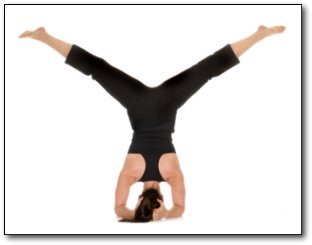 iStockphotoThe “champagne cork” position.
iStockphotoThe “champagne cork” position.
But science can tell us that non-lying-down positions reduce tearing and that a squatting labor position usually opens up the pelvis by 10 percent. And as anyone who has ever got their head stuck in a drainpipe knows, a 10 percent increase in space can sometimes mean a lot. Basically, squatting should be given some sort of medal at this point.
 GettyKnight Commander of the OB-GYN.
GettyKnight Commander of the OB-GYN.
Tooth Brushing

Bad breath is a great way to lose new friends. Nobody wants to talk to or sit next to someone whose breath is outlawed by the terms of the Geneva Conventions. So thank goodness we learned to brush our teeth so much.
Well, actually, our obsessive-compulsive tooth-brushing practices lead to deteriorating oral health, including increased numbers of cavities and eventual tooth loss. Traditional wisdom, as dictated to us from a young age by school-visiting dentists with happy, anthropomorphic teeth printed on their shirts, is that we should brush twice a day, after meals. That makes sense, because you’re getting rid of all those hamburger particles wedged between your teeth before they can start rotting and convert your breath into a chemical weapon.
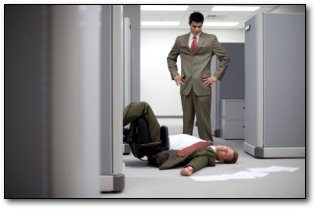 Getty“Oh, stop being dramatic, Carl. Carl?”
Getty“Oh, stop being dramatic, Carl. Carl?”
But surprise — you’re wrong. British dentists are now recommending that people, especially small people between the ages of five and 10, not brush their teeth after every meal. The reason is that the acidity in food and beverages causes tooth enamel to soften, and brushing right after eating an acidic meal strips enamel from the teeth, leaving them vulnerable to cavities. Leaving a little food behind actually doesn’t cause as much damage as your toothbrush does as it scrubs the natural protective layer off the teeth. Up yours, dentists.
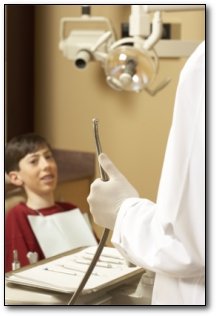 Getty
Getty
So how the hell are we meant to do it?
Studies show that flossing is much more important than brushing. Dental floss actually removes the bacteria that clump together between your teeth, without scrubbing and stripping layers off them.
But before you run to your dentist and smugly assert that Cracked told you that brushing is bad for you, brushing twice a day is generally still believed to be the best practice. But you should do it away from mealtimes to give your teeth time to recover from acid wear — ideally, right before you eat or drink anything. And although you might instinctively prefer a hard toothbrush to really grind off those asshole bacteria, studies suggest you should use a soft brush and focus on your gums more than your actual teeth. So it’s really more of a tooth massage.
 GettyAnd no massage is complete without a happy-ending mouthwash.
GettyAnd no massage is complete without a happy-ending mouthwash.
Sitting

We’ve mentioned before that long periods of sitting increase your risk of diabetes, heart disease and even frickin’ cancer, no matter how much you work out when you’re not sitting. We also mentioned that for some bizarre reason, sitting down for long periods of time means that you’ll probably die earlier. What we didn’t mention is that this is all because of the invention of chairs.
 Via Wikimedia CommonsThanks, Egypt.
Via Wikimedia CommonsThanks, Egypt.
The straight-backed chairs we’re familiar with today have been around for thousands of years, but until recently, they were almost exclusively for really important people. We’ve still got words like “chairman” and “university chair” that show the connection between a thronelike chair and leadership. As recently as the 19th century, the default mode for the average person was a backless stool or a bench, or just plain old kneeling.
 GettyOr the stocks.
GettyOr the stocks.
And you guessed it — our bodies aren’t designed for the right-angled back support presented by the average chair. When we’re standing up, or even sitting on something backless, our abdominal muscles are active, helping our spines support our weight. When you’re sitting on a chair, these muscles relax, and suddenly your spine alone has to take the entire weight of your upper torso, like a twig holding up a bowling ball. The extra stress puts pressure on your spinal disks and can eventually lead to chronic back pain, something that’s experienced by 80 percent of Americans.
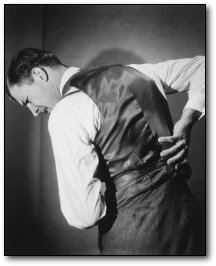 Getty
Getty
So how the hell are we meant to do it?
Some experts on sitting recommend “active sitting” (which sounds about as relaxing as sleepercising) using an exercise ball, kneeling stool or something else without a high back. There are also standing desks. But if you don’t want to look like a cubicle worker whose office manager reads too many furniture design magazines, there’s another option: A study used an MRI to measure the spinal disk movement of three groups of people: one sitting, one slouching and one lying back at a 135-degree angle with their feet on the floor. The last group showed the least disk movement. By the way, this reclining position was common during the Roman Empire, including in Jesus’ time. So try it at work, and tell your boss you’re avoiding future sick days and deepening your religious experience.
Source: www.cracked.com







